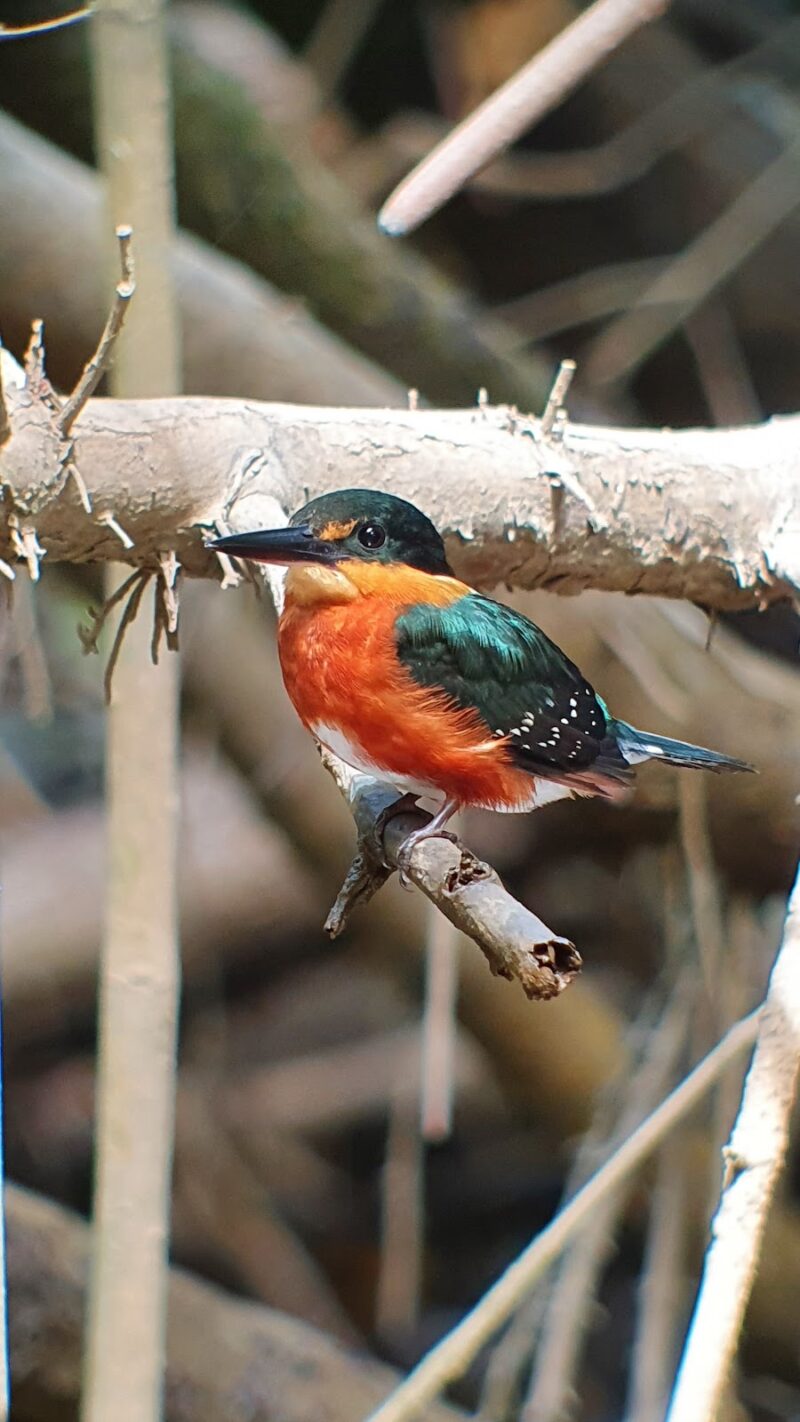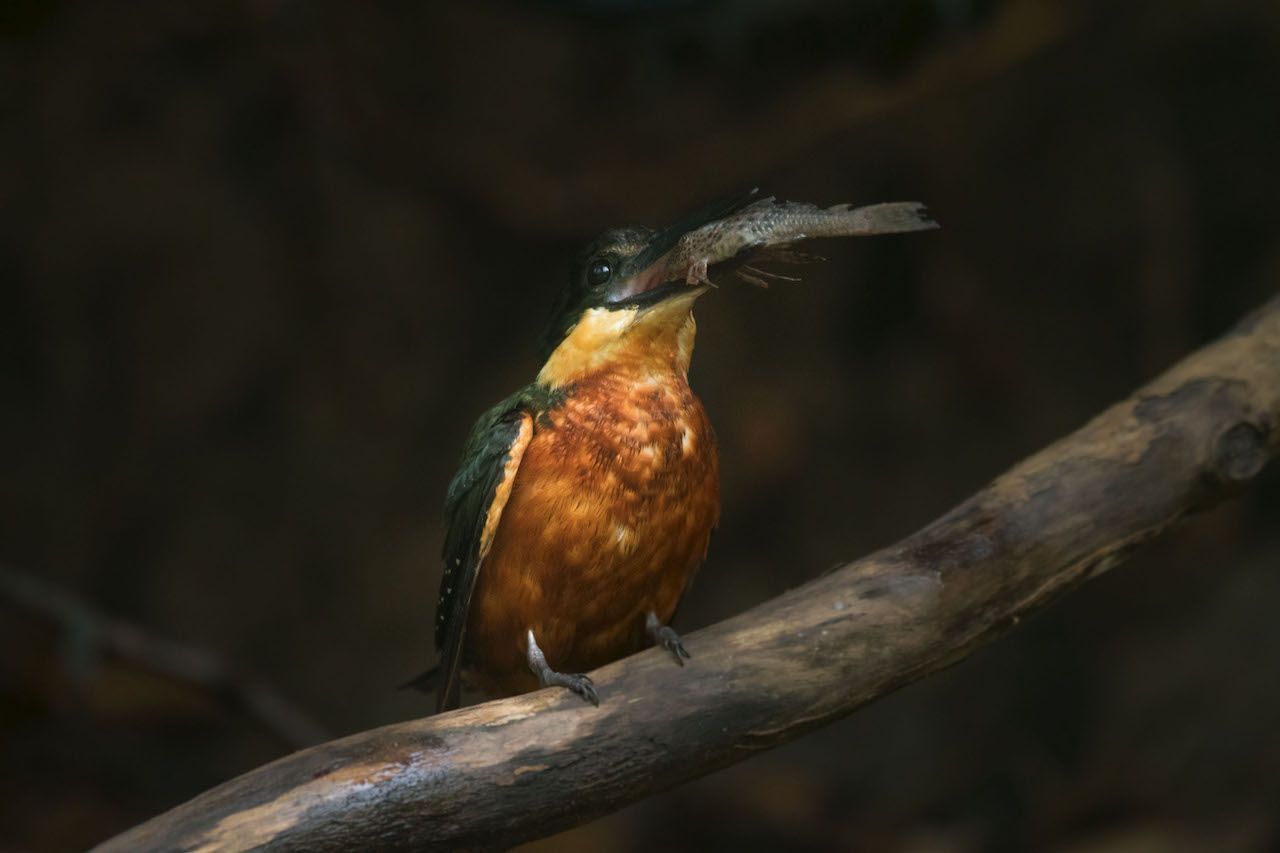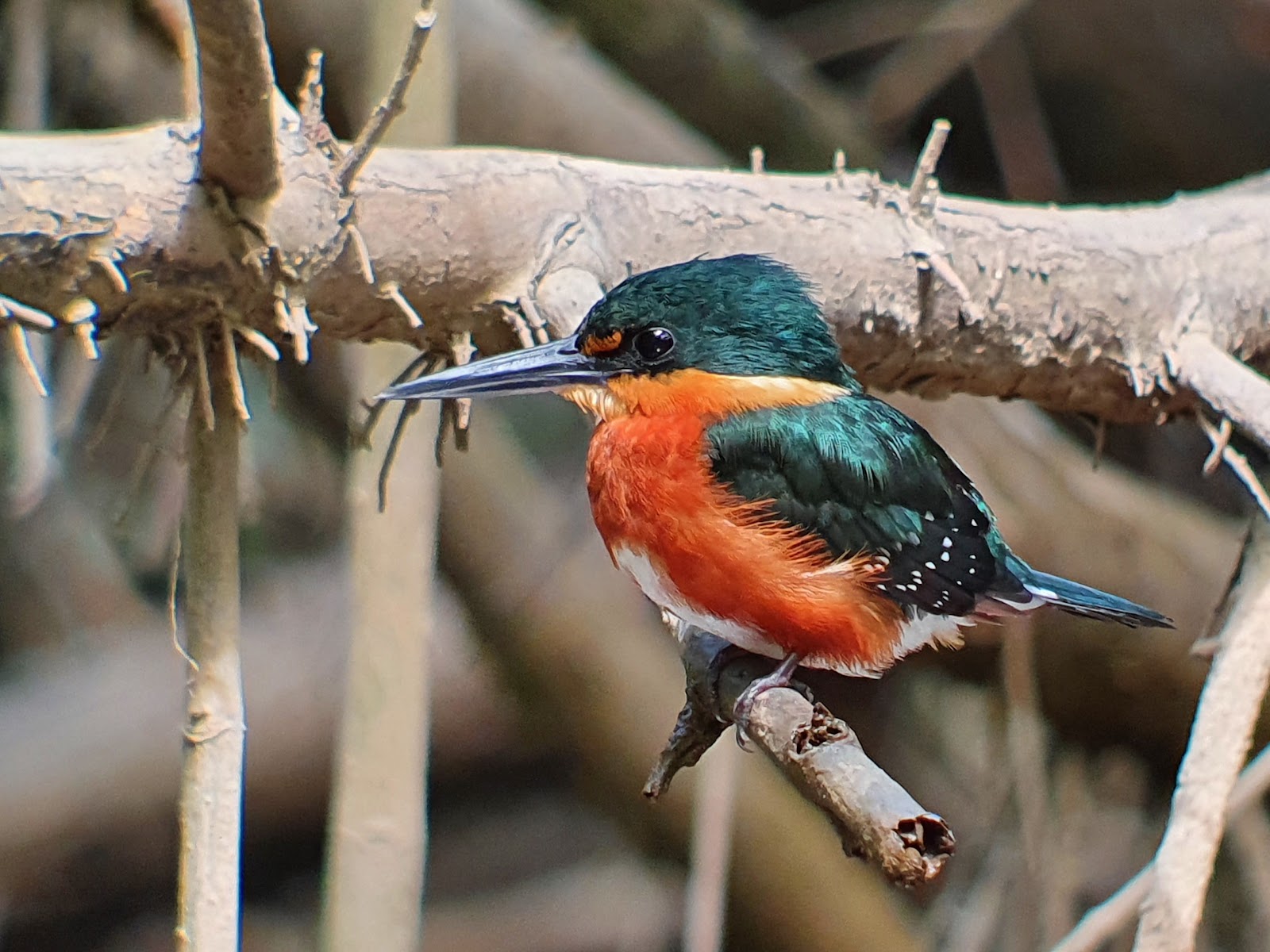New World Kingfishers
The Kingfishers are amazing birds that inhabit freshwater environments such as rivers, lagoons, streams, wetlands, estuaries and the coast line. There are about 116 species of Kingfishers around the world and just six are from the new world, which all of them occur in Costa Rica.

They have short necks, and large heads. Their bills are long, sharp, and pointed because they are adapted to catch mainly fish however they may eat insects and crustaceans. Normally, they use to perch on a branch close to the water to look for the next prey. Once they catch the fish, they carry it and then go for a convenient perch where they are going to beat it against the branch until they kill the fish. Finally they swallow it whole from the head first due to in this way the fins of the fish will not injure the throat of the bird.
Along the Tarcoles River you can see five species which are Ringed Kingfisher, Belted Kingfisher, Amazon Kingfisher, Green Kingfisher, and American Pygmy Kingfisher. In the boat trip you only will miss the Green and Rufous Kingfisher because it inhabits the Atlantic slope of the country.
In addition, many other Kingfishers of the Old World use to nest cavities of the trees or in termite nests, but all of the New World Kingfishers usually nest along the river banks. Moreover, these birds have short legs and most of the species have four toes, of which three are forward pointing and partially joint, and the other toe is backward. This kind of feet digit anatomy is known as “syndactylus”. Therefore these adaptations help them to dig burrows where they may lay from three to eight eggs depending on the species.
The Ringed Kingfisher (Megaceryle Torquata) is the biggest of the American continent, it measures 16 inches long and it is common in lowlands from both slopes of the country. It has a blue-gray color on the back, a conspicuous bushy crest, a stout body and bill and for sure, a caracteristic white collar that gives its name. The females of this species can be recognized because they have a slate-blue band on the breast with a deep rufous on the belly, while males only have the rufous color underparts, they lack the band on the breast.
The other one that looks alike is Belted Kingfisher (Megaceryle alcyon) but this one is just 4 inches smaller than Ringed Kingfisher and can only be seen during migration season. It breeds in Alaska and Canada, so it can be found in some shore of the rivers and coastal areas of Costa Rica specially in the Caribbean coast, from the middle of September but then it departs by late april. So you will be able to see this species in Tarcoles river during this time.
The behavior of this species is quite interesting, because it is often seen kitting or fluttering in the air, over the water surface, because they use this technique to hunt. Therefore, in this way it has a wide vision to locate the next prey, once it sights the fish it is going to plunge into the water to catch it with its big arrow bill shape.
Furthermore, if we continue mentioning the species from the biggest to smallest, the Amazon Kingfisher would be the next one, with only 11 inches of size this is the largest green-backed Kingfisher of this central american country. Besides, it has a long and heavy bill, it is black as well as the feet. In this species the males have a rufous band on the breast and females lack this feature. This kingfisher prefers fast or slow flowing rivers, large creeks and also mangroves channels. During the last few days we have seen a couple hunting next to our dock.

On the other hand, in this boat trip you also can get the Green Kingfisher (Chloroceryle americana). It is smaller than Amazon Kingfisher, both have similar dark green metallic colors on the back but Green Kingfisher shows white spots on the wings. The females sometimes present two incomplete bands underparts, exactly on the chest and belly but the males have a complete rufous band, like the male of the Amazon Kingfisher.
Finally, the smallest Kingfisher of Costa Rica measures just 5 inches, this emblematic bird is well known as American Pygmy Kingfisher (Chloroceryle aenea) as the other two kingfisher mentioned before, this tiny bird also has metallic green color on the back, and depending on the sunlight it can reflect beautiful shiny colors. Besides, the secondaries are sparsely spotted. Moreover, its cheeks and throat have a buff color that starts shading to dark rufous underparts. However it has a little bit of white in the middle of the belly that extends until the vent.

Lastly, during Tarcoles Marvels tour we have seen this bird very actively hunting for small fish but also we realized that it likes the shrimps too. This species is emblematic of the Mangrove forest. Serious birders want to get the American Pygmy Kingfisher in their life list because they know how special it is. Sometimes it becomes a challenge to look for this inconspicuous bird, also for photographers it could be hard to have a picture, however our boat captain knows very well every corner of the river. So, he knows which are the best spots to find it as well as he knows how to park the boat in the best position to get a great picture.
So, If you want to see five different Kingfishers and more birds and wildlife, you already know it, just book with us to experience this wonderful experience through Tarcoles river!
